Ever wonder why you bother putting on polish since your nails will break or peel within a day anyway? Yep, me too. There are lots of treatments and tonics you can use to deal with damaged nails, but here are 14 natural ways to strengthen nails and less prone to annoying splitting, breaking, and peeling:

Jump to:
Weak Nails?
1. Make sure you’re getting enough protein.
Making sure you meet your protein needs will help keep your nails (and muscles) strong and in tip-top shape. So how much do you really need? Somewhere between 45 to 56 grams per day is the recommended intake for an adult. Here’s a guide to the plant foods containing the most protein.
2. Try biotin supplements.
Keratin is a protein that makes up your skin, hair, bone, and nails, and biotin (a B vitamin) can help support your keratin levels [source]. You do have to commit to it for a while, and the most recent studies have not proven results [source] (except in brittle nail syndrome [source]), but it works well for some people!
Biotin can be found naturally in foods such as nuts and seeds, eggs, avocado, salmon, dairy products, sweet potato, and cauliflower. It’s also good to know that eating raw eggs can prevent biotin absorption in the body [source].

Splitting Nails?
3. Consider having your thyroid levels checked.
Abnormalities in thyroid hormone can cause many physical symptoms, including brittle nails. Changes can be seen in both hyper- and hypothyroid, but 90% of people with low thyroid have thin, brittle nails [source]. So if you have this problem and other symptoms, particularly if the nail changes are new, it would be a good idea to check with your doctor.
4. File your nails in one direction.
When giving yourself a manicure, rather than filing back and forth, which can cause your nails to split and peel (and we all know how fun that is), file in one direction to keep them intact and less prone to breakage.
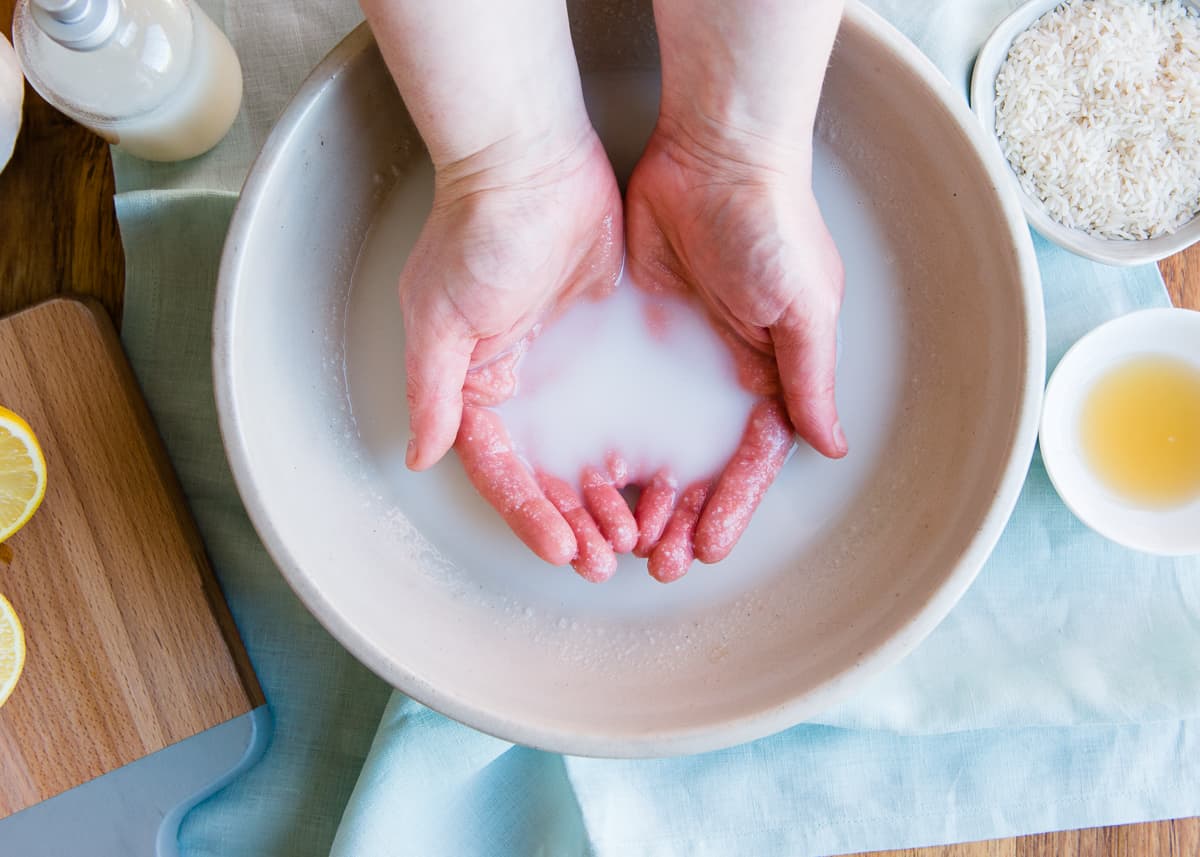
Dry Nails?
5. Use gloves when cleaning.
Exposure to detergents, solvents, and chemical cleaning solutions (especially if you use harsher ones—which you shouldn’t!) can wear down your nails and cause them to become weak [source]. Use gloves when washing dishes and cleaning. Better yet, have the kids pitch in!
6. Limit water exposure.
Drinking water = good. Water on hands = drying for your nails and cuticles. It sounds backward, but this can be a problem—particularly if your skin is already dry.
Research has shown splitting of the nails can occur when the nails are repeatedly exposed to wet and then dry [source]. Sounds like that could apply to anyone that is cooking and cleaning, professionally or at home, and those who have to wash their hands multiple times a day, such as child care workers and people in the healthcare professions.
If you’re soaking in a soothing detox bath, keep your hands out of the tub to minimize water exposure, which will cause nails to dry out and weaken once they’re out of the water. Again, wear gloves when you can. For frequent hand washers, try to follow some of the other advice here when possible.
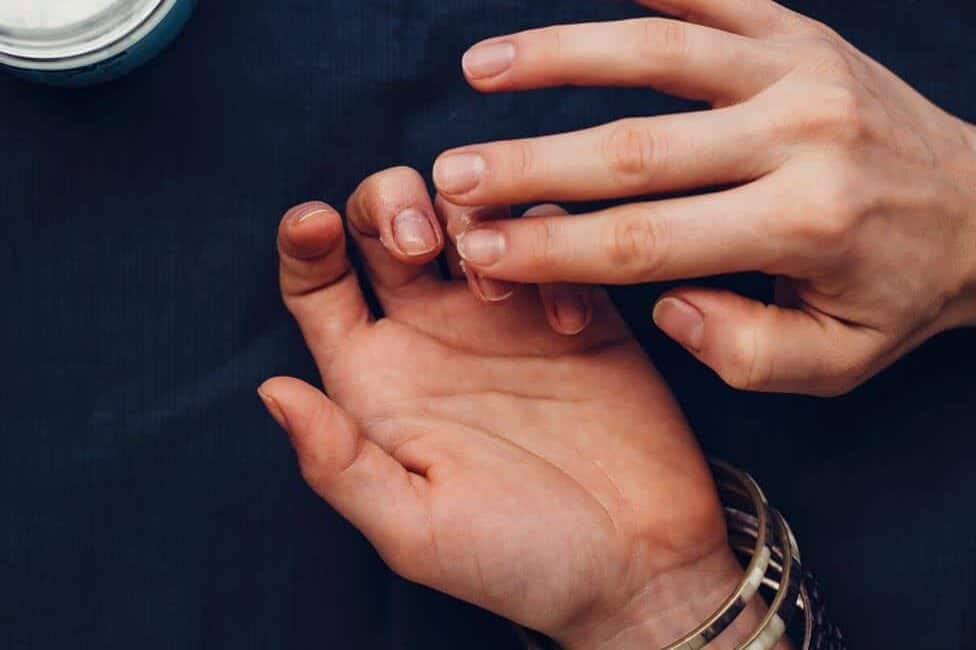
7. Moisturize—a lot!
After washing your hands, make sure to lather up with a hand lotion or cuticle balm to keep moisture from escaping. Use olive oil for a simple cuticle oil, or soak your hands in oil for 10 minutes to heal dry nails and cuticles.
8. Avoid industrial-strength polish remover.
Heavy-duty nail polish removers, especially those containing acetone, dry out your nails, cuticles, and fingertips, leaving them susceptible to breakage and peeling. Try a protein-enhanced non-acetone remover, or don’t use remover at all.
9. Up your zinc intake.
Weak, brittle nails can be a sign that you’re deficient in zinc. Up your intake of nuts, root vegetables, and shellfish to get more of the mineral.
Nail Fungus?
10. Try tea tree essential oil.
Tea tree essential oil has been shown to have antifungal activity [source]. Apply 1–2 drops of tea tree essential oil daily to ward off fungal nail infections. You can also apply antifungal powder to help absorb moisture and help in the fight against fungus.
11. Don’t cut your cuticles.
If you’re giving yourself a manicure at home, gently massage oil into your cuticles and then use a cotton-tipped swab to push them back. Cutting the cuticle allows fungus and bacteria to enter the nail bed, making it easier for infections to occur.
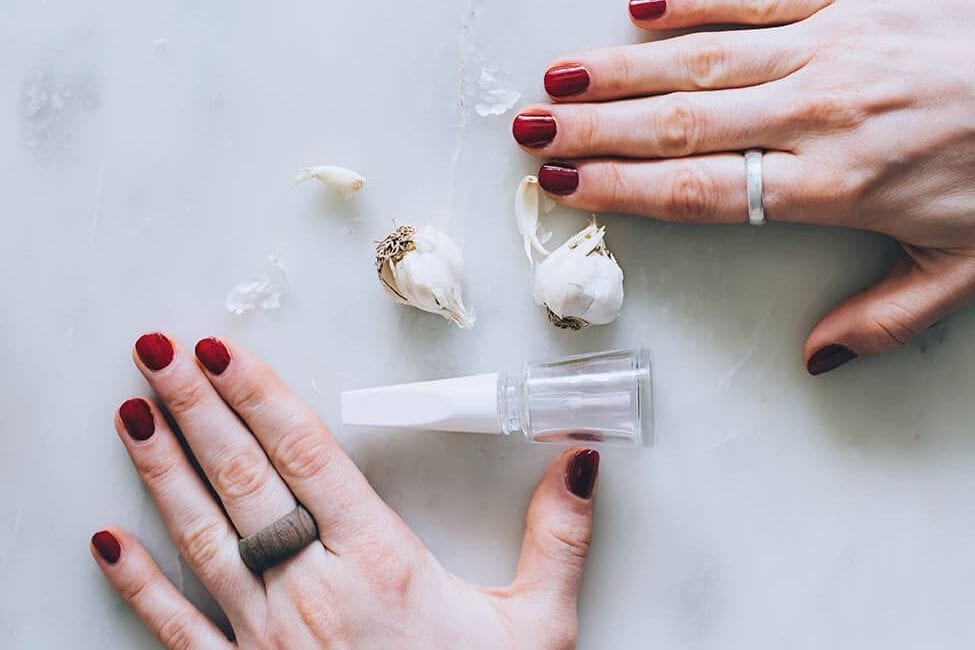
12. Try garlic.
Evidence has shown that garlic has toxic effects on a common fungus [source]. Crush a clove, and add it to a bottle of clear nail polish. Let it infuse for at least a week, then paint the infusion on to help kill fungus and pave the way for seriously strong nails.
Yellow Nails?
13. DIY a whitening scrub.
If your nails are yellow or discolored, make a paste of hydrogen peroxide and baking soda. Massage your nail beds with the mixture, let it sit for a couple of minutes, and then rinse off.

14. Let your nails breathe.
Just like it’s a good idea to take a break from coloring your hair or wearing makeup, giving your nails a breather from polish can keep them from turning your nails yellow and help them regain their strength. You can still have pretty nails with a no-polish manicure! Brittleness is seen in people who wear nail polish for months, especially when they apply it over the previous coat, and this can also cause white or yellowish patches [source]. Nails replace themselves after 6–9 months [source], so the longer you can go without polish, the better.
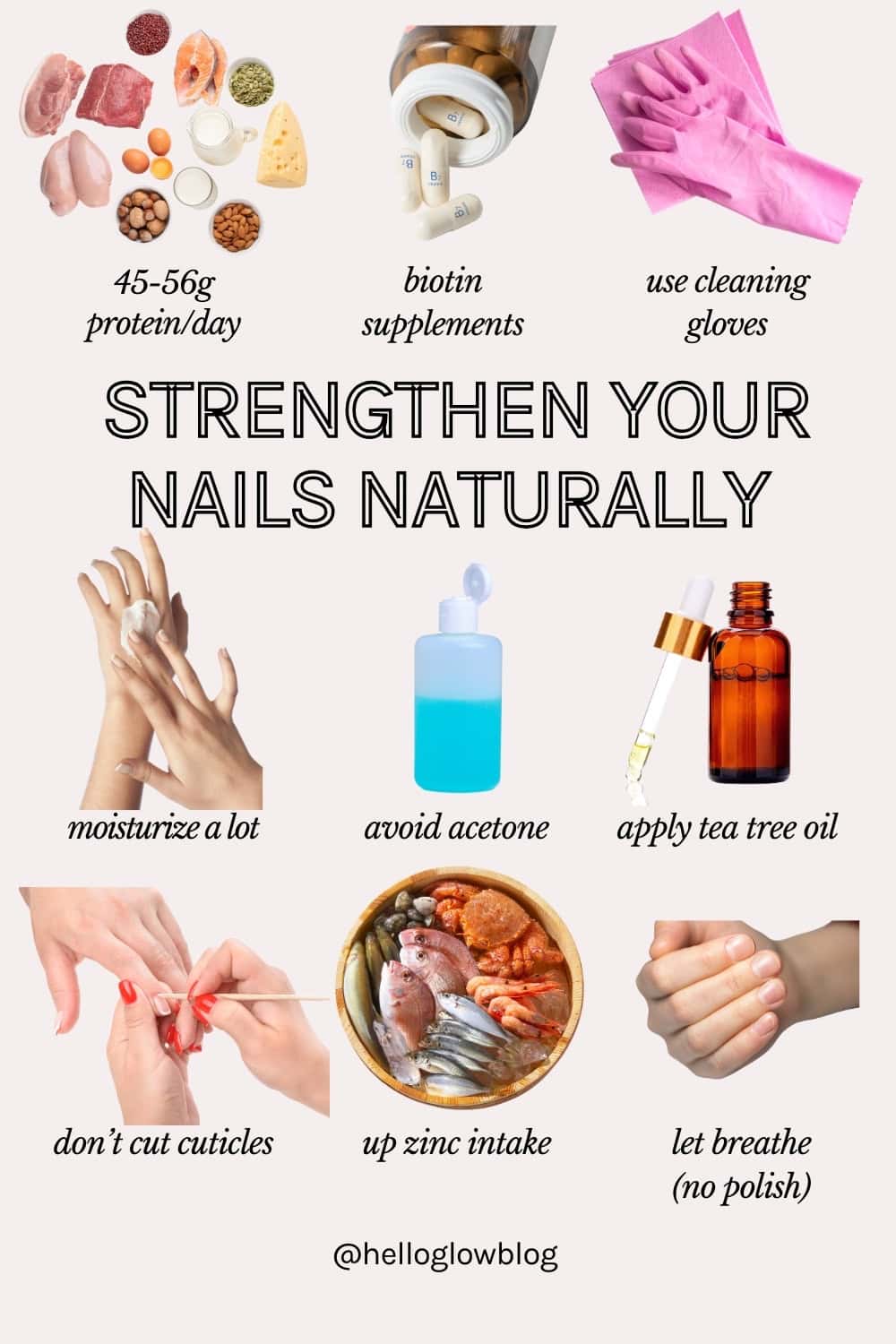
This article was medically reviewed by Dr. Gina Jansheski, a licensed, board-certified physician who has more than 20 years of practice experience. Learn more about Hello Glow's medical reviewers here. As always, this is not personal medical advice, and we recommend that you talk with your doctor.

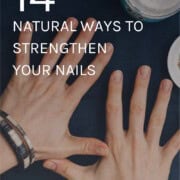

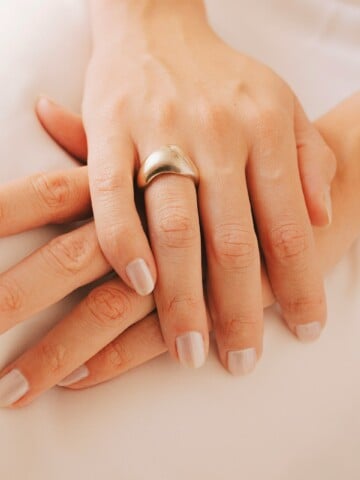
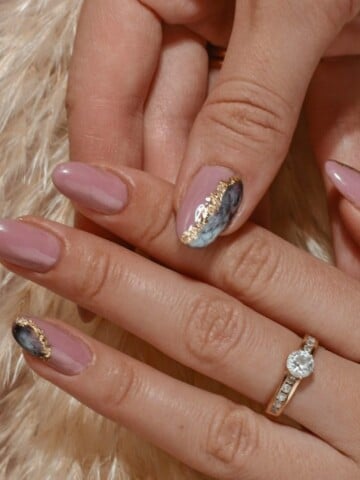

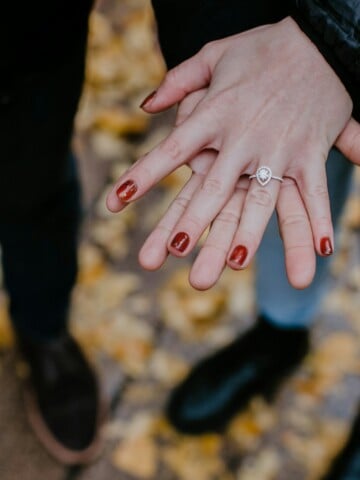

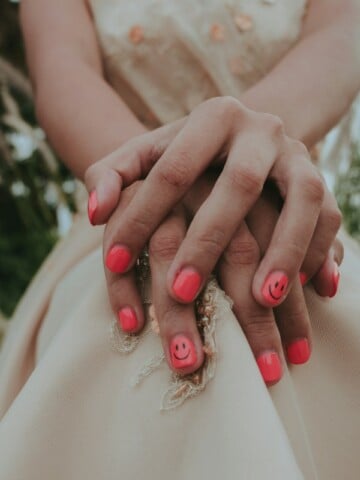
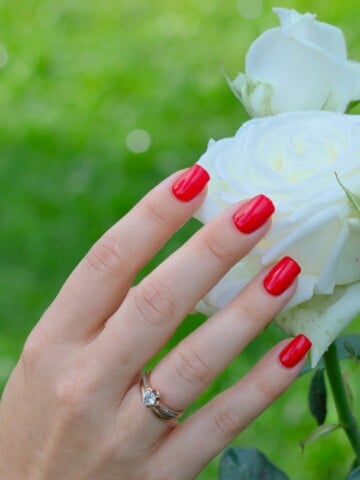
Rebecca Payne says
MY NAILS ARE SO BAD. THANK YOU SO MUCH FOR THESE TIPS.
Sujeet Singh says
Really very useful post regarding nail care
Sir can u also suggest some more tips.